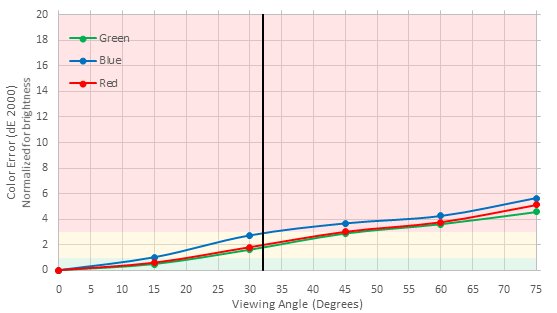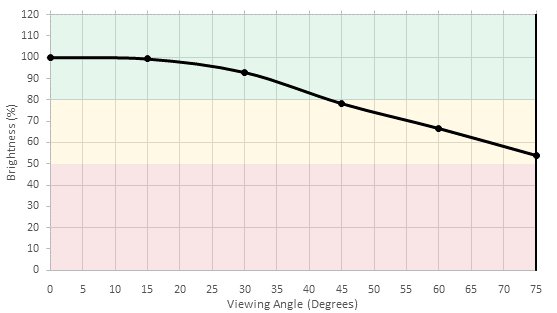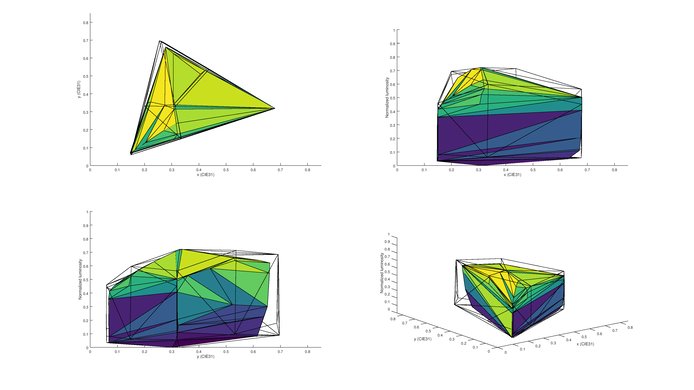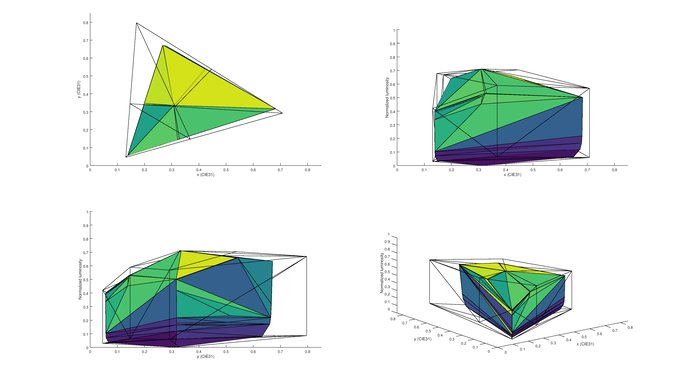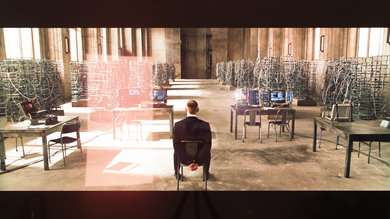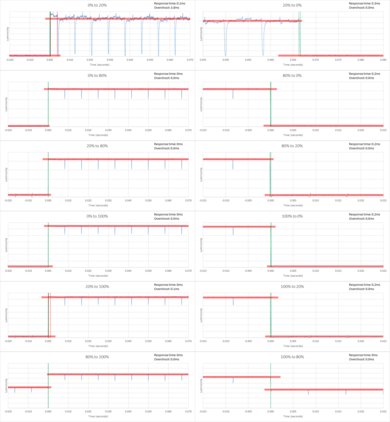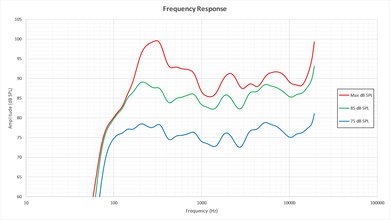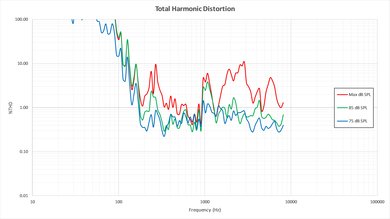Our Verdict
The LG B6 is a great all-round TV. It excels when watching movies and especially HDR content. The picture quality is great no matter the usage.
- Almost no motion blur in sports and video games
- Perfectly deep blacks provide an infinite contrast ratio
- Very good picture quality when viewed at an angle
- Brightness depends on screen content due to Automatic Backlight Limiter (ABL)
- Displaying static images results in temporary image retention
Great for watching movies. an OLED can't be beat and the LG B6 is no exception. It provides excellent dark scene performance and picture quality.
Terrific TV show performance. Great experience from anywhere in the room and deals very well with ambient reflections. Good at upscaling low quality content.
Sports performance is great. The B6 has almost perfect motion handling so fast moving objects appear crisp. Great gray uniformity to reduce the dirty screen effect.
Fast paced video games appear very good. Great motion handling, input lag is average but should not be a problem for most people.
The B6 excels with HDR performance. Highlights get quite bright and provides a wide color gamut for vivid images.
Excellent for HDR gaming. Feels very responsive due to low motion blur and good input lag. Can produce fairly bright highlights and provides a wide color gamut for vivid images.
Great choice for a PC monitor. Low motion blur and clear text. The input lag is average and should be OK for most people but unfortunately there is some temporary image retention.
Check Price
Differences Between Sizes And Variants
We tested the 55" (OLED55B6P). For the most part, we expect our review to be valid for the 65" (OLED65B6P).
If someone comes across a different type of panel or if their LG OLED 55B6P doesn't correspond to our review, let us know and we will update the review. Note that some tests such as the gray uniformity may vary between individual units.
| Size | Model |
| 55" | OLED55B6P |
| 65" | OLED65B6P |
Popular TV Comparisons
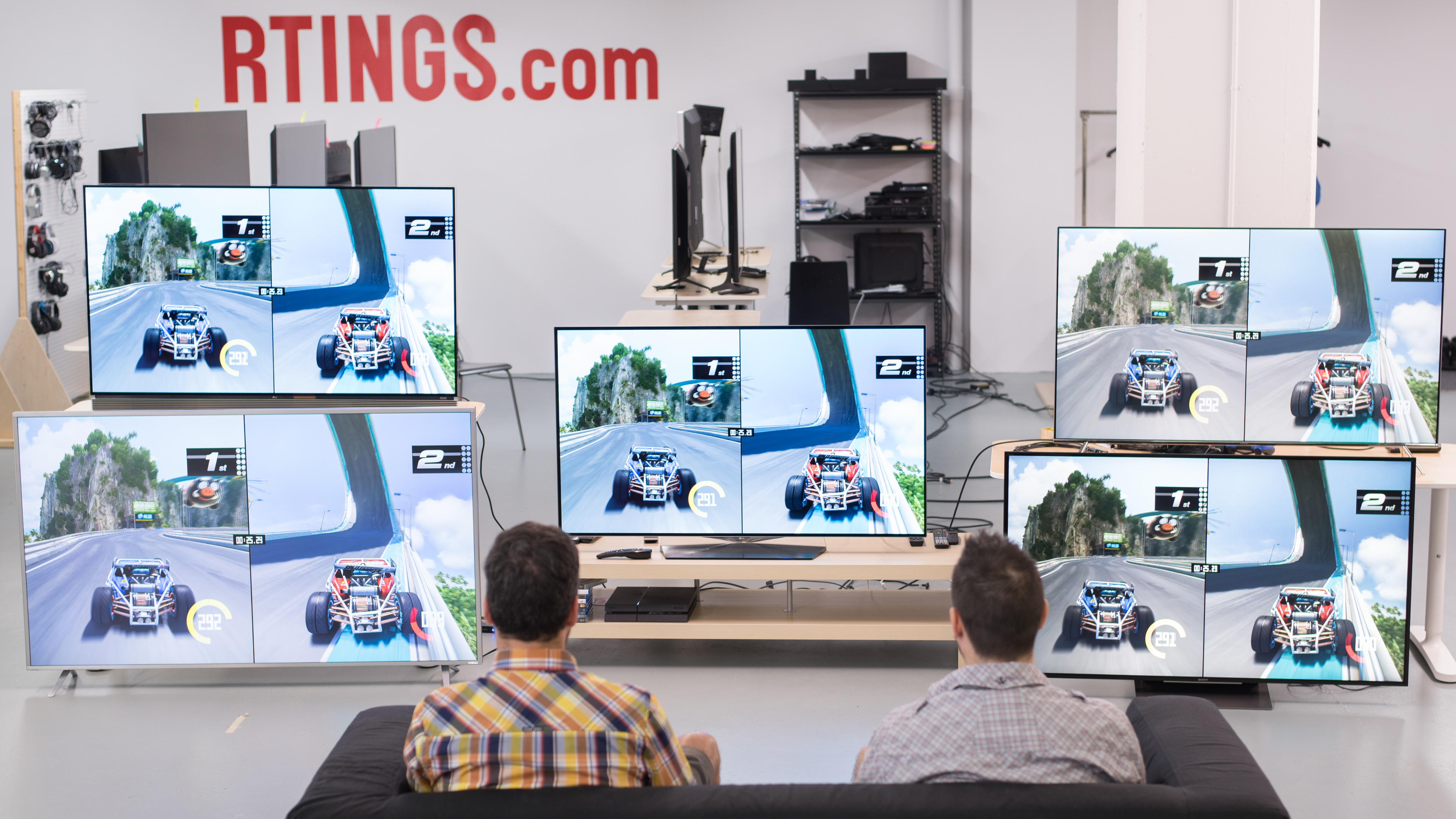
The LG OLED B6 performs quite similarly to the higher end LG OLED E6, as well as last year's OLED TVs. As an OLED it can't be beaten on picture quality, but this comes at a high price. Keep that in mind with our recommendations below.

We buy and test dozens of TVs yearly, taking an objective, data-driven approach to deliver results you can trust. Our testing process is complex, with hundreds of individual tests that take over a week to complete. Most of our tests are done with specially designed test patterns that mimic real content, but we also use the same sources you have at home to ensure our results match the real-world experience. We use two main tools for our testing: a Colorimetry Research CR-100 colorimeter and a CR-250 spectroradiometer.
Test Results
For reference, we took a video of our local dimming test.
The SDR peak brightness of the B6 is almost the same as the LG C6 and the LG E6. Overall SDR peak brightness is average, but for highlight smaller than 25%, it has good result around 400cd/m². Anything beyond 25% of the whole screen gets dimmed by the ABL (Automatic Brightness Limiter), and this affect the final score, making it an average performer when compare to any similar priced, LED TVs.
The peak brightness for the LG B6 is fairly good. It is quite similar in performance to the higher end LG E6. This level of brightness mixed with an infinite contrast ratio will make HDR content look amazing. Unfortunately the Automatic Brightness Limiter (ABL) causes the fullscreen brightness to be very low, and it may not be enough to combat glare in bright rooms.
Like the other OLED TVs tested before, the gray uniformity is better than LED TVs, but still isn't 100% perfect. On this picture you can see that the left and right side of the image are more bright and there is also a large band just right of the center that is a bit warmer. That said, the gray uniformity of the LG B6 is still very good and should not cause the dirty screen effect when watching sport like hockey or football. This may vary depending on the individual unit.
On the LG B6P, the image retention is still problematic. When an static image is present on screen for a long time, it will leave a imprint on screen until some normal video content is play. Usually after 5 or 10 mins, the faint ghost image should go away. Gamer should be aware of this inconvenient.
Wide color gamut is enabled automatically when the TV detects a HDR signal. The wide color gamut is about the same as the LG E6.
Update 10/13/2016: We remeasured the color gamut, and have updated the result.
The B6 has one of the best color volume performances of all 2016 models. It is able to cover most of the P3 color volume and produce saturated colors even at low luminance.
The LG B6 does have some image retention, but it differs a bit from what an IPS panel would show. Unlike LED TVs, on an OLED TV the image retention looks more like a photo negative, where the brightly exposed part of the screen now looks darker than the rest. When looking at the test picture of our 15% gray pattern the left part of the picture where the white section was is clearly darker than the right side which was black.
Even after 10 minutes, some faint retention remains, but this does go away after some more normal TV viewing. In a case where the retention lasts longer the LG OLED TVs do have some internal testing/fixing programs to fix retention problem and after running this program, any retention that would not be fixed by watching normal content usually goes away. We are not aware of any image retention being permanent on any OLED TVs that we have tested yet.
As with other OLED TVs, the response time is excellent and so no trail can be seen following the logo. The backlight is flicker-free. Some people may prefer a flickering backlight instead. Motion blur is non-existent. For low frame rate content this lack of motion blur can be jarring, especially for panning scenes.
To play 24p source material without judder, you need to activate 'RealCinema' option under 'Setting'→'Picture options'. Although inconsistent, for 60p and 60i sources set 'Trumotion' to user and set 'De-Judder' and 'De-Blur' to 0 to remove judder. It wasn't consistent enough for us to consider a pass though.
The B6 is a native 120Hz display, and can interpolate 60Hz and 30Hz content. To enable motion interpolation, set 'Trumotion' to 'User'. For a 30fps source increase 'De-Judder' and for a 60fps source increase 'De-Blur'. Note that this may introduce artifacts.
The 1080p input lag of the B6P is average and will disappoint the more professional gamers out there who need fast reflexes. To get the lowest input lag, set the input icon to 'Game Console' and change to the 'Game' picture mode. This results in 43.2 ms input lag with a 4k @ 60Hz input and 44.4ms input lag with a 1080p @ 60Hz input. With interpolation, there is 62.6 ms input lag.
It is important to note here that from the get-go, our set always had an input lag a bit higher than what other sources were reporting for this specific TV model, so some of this may be due to differences between individual sets.
Update 11/07/2016: The input lag results have been updated with the newest firmware update 04.30.40, but the results remain largely unchanged. Note that the HDR input lag still cycles, which may be an issue for gamers. A video showing the cycling can be seen here, and a full table of the results can be found below. We will continue to update these results with any further firmware updates.
Note that ranges of numbers show the variance in the cycle of the result.
| Source | Input lag |
| 1080p @ 60Hz | 27.6ms |
| 1080p @ 60Hz @ 4:4:4 | 62.9ms |
| 1080p @ 60Hz @ HDR | 28.2ms |
| 4k @ 60Hz | 27.8ms |
| 4k @ 60Hz @ 4:4:4 | 70.9ms |
| 4k @ 60Hz @ HDR | 28.5ms |
Update 11/08/2016: Some owners have started a petition to LG to address these issues. This can be found here.
After some more testing we have found that none of the LG TVs support chroma 4:4:4 when in a HDR picture mode, regardless of the input icon. This can be seen here .
Update 01/05/2017: With the newest firmware update (04.30.77) the input lag has been reduced across all resolutions. A 'HDR Game' picture mode has been added, and the input lag no longer cycles over time. The results above have been updated.
Update 02/07/2017: Note that in the 'HDR Game' picture mode there is some screen tearing in the bottom 1/4inch of the display. This does not affect the other picture modes.
Update 03/06/2017: Retested the B6 with the latest firmware update (04.31.10) and the screen tearing issue in 'HDR Game' picture mode is now fixed. Input lag remained the same as with the previous update
To enable Chroma 4:4:4 support, first go in the 'General' menu, then enable 'HDMI ULTRA Deep Color' for the HDMI port that you are using. After, change the input icon to PC in the 'All inputs' menu, accessible thru the remote input button. Under PC mode, the input lag is 70.9 ms at 4k.
On the LG B6P, when a Bluetooth device is connected, the 'Game' picture mode is unavailable.
Very good frequency response, for a TV, especially at lower volumes. Lowend cutoff of 90Hz and maximum loudness of 87.6dB are not great, but decent. However, at higher volumes, some pumping and compression may be present. Also, it won't be able to produces the punch and low-end thump that external speaker/sub systems are able to produce.
Poor performance. The amount of total harmonic distortion at 75dB is excellent. However, there is a noticeable rise in the amount of harmonic distortion under heavier load, especially at maximum volume, where it could be audible is certain situations.
The B6 features WebOS 3.0, which provides a very responsive interface and is easy to use. Popular applications such as YouTube, Netflix and Amazon Video come pre-loaded and the 'LG Content Store' provides a wide range of applications to extend the viewing experience. The number of available applications is increasing all the time. The remote is similar to the EG9600 and provides a pointer for easy navigation.
The remote is much smaller than the E6, and is the same as the UH8500. Although it looks less premium than the E6, the smaller size is more comfortable to use. It features a pointer controlled by the remote movements to navigate menus. Although there is a 3D button, the TV does not have the feature.









